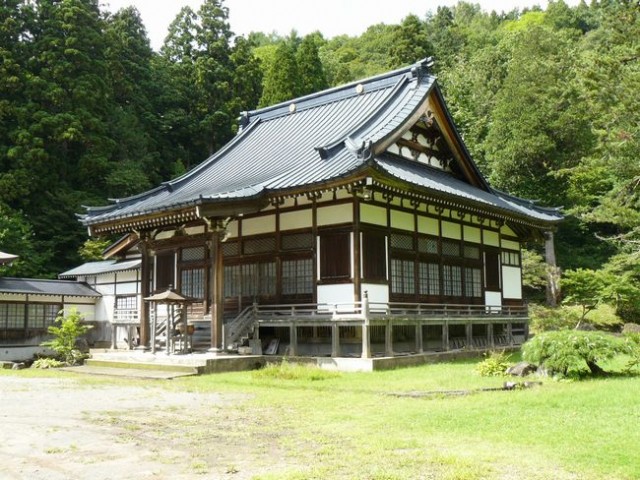Mt. Kuromori Yama, Josen-ji Temple
| Location | Kuromori-shita 84-3 Minaminakano, Kuroishi, Aomori Prefecture 〒036-0405 |
|---|---|
| TEL | 0172-54-8644 |
| Parking | Available |
| Access | 12 minutes by car from the Kuroishi IC on the Tohoku Expressway |
| Literature monuments | There is a path through the forest, along which are numerous monuments to various local literary figures.Literature monuments |
| Notes | There is a small cafe within the temple grounds. We encourage visitors to stop in for coffee and donuts. |
An introduction to Mt. Kuromori Yama, Josen-ji Temple
Josen-ji Temple is located on the mountainside of Mt. Kuromori-yama, and is surrounded on all sides by peaceful forest. It is famous for its garden pond and its many irises.
Within the forest there are also many monuments to locally born authors, giving it the name of the Literature Forest.
Literature monuments
The History of Josen-ji Temple
Josen-ji Temple was founded in 1824 by the pilgrim Zekū (the disciple of Kuroishi’s Raigō Temple).
The principle object of worship at Josen-ji Temple is the standing image of the Amitabha Buddha (built by Keishinzouzu).
While he was fasting in a cave at Nakano Fudosan, Zekū received a message that he should head north to where a pure spring of water gushed forth from the earth. He discovered this spring on the mountainside of Mt. Kuromori-yama (it exists now next to the temple’s main hall). The temple was founded originally as Josen-an, and it became Josen-ji Temple in Meiji year 8.
The second generation priest at Josen-ji Temple Jyakudo became Zekū’s disciple in 1825, at the age of 13. After completing his training he helped with the development of the temple, and is greatly honored as a learned scholar and priest. he passed away at the age of 92.
From a young age he carved Buddhist statues, and throughout his life he completed several thousand single block carvings. He donated many of these his devotees, and it is said that they are distributed as far away as Hokkaido and Akita Prefectures.
The fourth generation priest Myoukū was appointed assistant teacher in the third year of the Meiji Era, and he devoted himself to the operation of the Kuromori School, which was located in one of the temple’s cabins. Many people from all over the Tsugaru Area aspired to study here, and the school produced many famous political and economic figures. In the fortieth year of the Meiji Era a Myoukū main temple building was constructed, but both it and the temple quarters were destroyed by fire in the nineteenth year of the Showa Era. In year forty one of the Showa Era the main temple hall was rebuilt, and it remains standing to this day.











